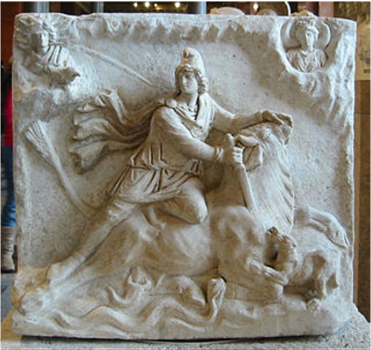Hi W & D~
Jesus Birth “clues”, are scriptural, but not plain.
in brief...
* Knowing historically “shepherds” stayed out all Night in the fields, with their “sheep” flocks during “birthing” season...ie Spring/
(historical citation?) according to Hebrew lunar calendar, Nisan, Georgian Calendar...April/March....
(Shepherds in the fields were first told of
Jesus’ Birth...(The Lamb OF God).
Luke 2:...background.
Luke 2: 7 & 8....Jesus’ birth was at night, and Shepards were told (by Angels) at night of Jesus’ birth.
* Pryor to Ex 40, God is telling Moses, what and how to Build a structure unto God.
Ex 40: 1 & 2, Moses is told to gather the congregation to the Tabernacle.
A “Tabernacle” is notice of Gods Presence “WITH” men gathered together to Praise God.
(First Day of the First Month...again, Nisan.)
. (Later, all such Structures call “Gods House of Prayer”.)
Isa 56:7
Matt 21:13
* Exodus....mans sacrificing of Lambs, (BLOOD and BODY) (unblemished and One Year Old)...At Passover. (Other specific animals also accepted).
God knows a mans circumstances AND EFFORT.
Ex 12:3
(Full animal offered for For the mans forgiveness, called a Sin Offering. Lev. 4
“BLOOD, FLESH, DUNG of animal “not burned or eaten.
* Jesus (Gods presence) sent and dwelt among men.
John 1:14
* Prelude... The “unexpected” is revealed with “authority” higher than “earthly kings”....
Dan 2:46 - 49
* Maji...(early star gazers recognizing Scriptural prophecy revealed in the Stars).
(not modern day astrology).
* His “Star” prophecy.
Num 24:17
( Was literally a lining up of plants in such a fashion to light the sky as a huge bright star, and has not by any notable record been recorded again.)
* Maji....traveled from the East and presented Gifts to Jesus, Befitting gifts reserved to be given TO a King.)
Isa 60:6
(I think once they saw the “Star” and began their travels, it was approx. a 2 Year journey) (The distance from Sippar, the center of Magian Zoroastrianism, was a 4 - 6 week journey across the southern trade route to Jerusalem- here's a map of 1st century trade routes)

* Other texts that have to do with Rabbi’s...and Jesus’ birth during particular appointed “godly men”...(Preacher/Rabbi)
* Jesus being buried in an unused Cave/Tomb, having been “prepared” for a High Priest...
(Joseph Of Arimathaea, a Jewish Sanhedrin, offered his personal burial Cave for Jesus’ burial.) (Joseph being the same Joseph who solicited and received permission to Collect Jesus’ body and bury it.)
In Brief...Hebrew Tradition and Custom...bury dead body’s before sundown...(It was actually commanded in the Law-Deuteronomy 21:22-23)
Wash the body, shroud the body, strips of fabric wound around the body to secure the shroud (the strips were to hold the myrrh and other spices that were dessicants used to hasten drying out the soft tissue---the following year the "bones" were collected and placed in a small ossuary or bonebox and placed in a small niche cut into the rock), pounds of flowers and spices tucked in about the strips of fabric, and a napkin (small piece of fabric to cover the face) The face would be washed, anointed with oil and covered with the napkin.
Custom “etiquette” historically...A “napkin” when “dining”. If a person “dining” must leave the table temporarily, and INTENDS to RETURN .... (that his plate, food, should NOT be gathered up off the table)....that person LEAVES his “napkin FOLDED” and setting beside his plate.
* The face cloth Napkin Jesus was buried with was NOT within his burial shroud, but set to the side.
John 20:7
(Indicating His intent to RETURN....rise up to Life in his Body.....)?
* Jesus’ burial was rushed....Evening was approaching...It was a Preparation Day FOR the Holy Day....Holy Day was approaching whereby no work was to be done....Putting spices/flowers, had to be gathered, taken to the tomb...and was
not accomplished at the time Jesus was placed in the tomb.
* After the Holy Day passed, women brought spices and set off to put spices about the shroud on Jesus’ Body....but when they arrived at the tomb...
Jesus’ body had risen, his burial shroud lay where His Body was laid, and the Napkin folded/tied setting aside.
* Some claim, and I agree, Gentile men calling themselves “catholics”, have had great (ancient and historical) interest in searching and gathering any and all TEXTS, from ancient and historical days, OF scribes, recorders, scrolls, etc. that pertains to ancient history, particularly regarding God, Jesus, Religious aspects....AND have a very extensive Library (hall of records), that few “of the population at large have had ACCESS to view, read, study).
* Some claim, A Catholic man, reviewed information in texts speaking of Jesus’ Birth being the First day, in the Hebrew month of Nisan.
Apparently this Catholic man, believe that possible, as well it possible Jesus was born in December, according to the Julian...and Following Georgian calendar month....
So goes the suspicion is...this same man, Had text according to the Hebrew Lunar Calendar,
but added a notation of his suspicion of possibly December.
Who or Why December was “established” the Catholic Churches’ official position....IDK...never attended “their” exclusive “Councils”.
(The Christian writings from the first few centuries after Christ are widely available and they attest to the December 25 date.)
* Supposedly WHEN the Dead Sea Scrolls were discovered, and examined at length, A Jewish Calendar appears within the Text, in their historical native language....and verifies, the Jewish month of Nisan as the time of Jesus’ Birth.
(I served for the Israel Antiquities Authority at the American Exhibit of the Dead Sea Scrolls in my home city of Mobile Alabama in 2005 and I have studied the scrolls. I do not recall seeing any mention of Jesus at all, let alone his date of birth. Could you please provide the citation for which scroll that information comes from? For a more reliable reference: The Dead Sea Scrolls and the New Testament - Biblical Archaeology Society )
* The Scrolls first discovered by a Shepherd in 1947...and discovery of more up to 1956....at various times...were offered for sale, were also under authority of Jordan’s gov’.,...and without doubt of great interest to all high ranking religious leaders to see, inspect, study....and became under Israel’s authority, in 1967 (Palestinian/Israel 6 day war).
* Israel maintains the Scrolls, which are:
** Old, fragile, fragments.
** Painstakingly studied.
** being translated into other languages and posted online.
** Maintained in an Israeli Museum.
Glory to God,
Taken



